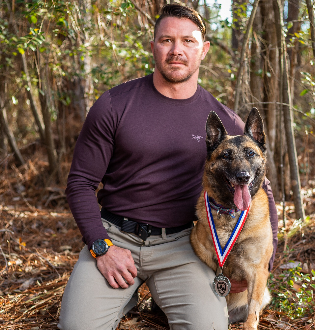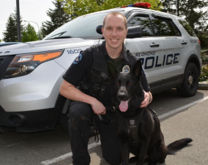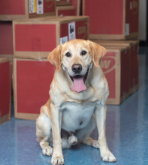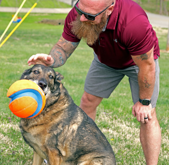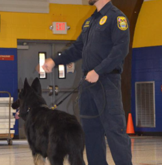Died – 4/5/24
Handler – U.S. Army Sgt. Julian Trent McDonald
Famous military dog Layka crosses the rainbow bridge after final salute at UT College of Veterinary Medicine
One of the most famous war dogs in U.S. history received a final farewell at the University of Tennessee on Friday by those who loved her in her last moments.On a mission at war, K-9 Layka took rounds from an automatic rifle during a mission in Afghanistan. This helped save the lives of her partner, U.S. Army Sgt. Julian Trent McDonald, as well as other members — but she sacrificed a leg. Her heroism in action landed the Belgian Malinois on the cover of National Geographic Magazine in 2014.In 2015, she received specialized water therapy for weeks at the University of Tennessee College of Veterinary Medicine to regain her strength after being injured in a four-wheeler incident.On Friday, Layka was given a final salute on UT’s campus by veterinarians who cared for her, her combat partner, and K-9 officers before she died at the age of 13.UT’s veterinarians said Layka lived a long and full life. Layka’s defining moment of heroism occurred in 2013 during a mission in Afghanistan. McDonald and Layka worked on special operation missions that he was running, doing direct night action raids. On one of those missions, McDonald said a building was dilapidated so they believed everything inside there had been neutralized and killed. When they let in the K9, Layka entered and cleared the first point of domination.Suddenly he identified her from a string for night vision on her back inside a room. She was in the corner and was engaging what McDonald thought was a dead body at the time. When he went up to pull her off that dead body, the man was not dead.”That’s when he began to fire… anywhere between six to eight controlled shots with an AK-47 and point-blank range, essentially hitting her four of those times,” McDonald said. “Once in the tricep, came up underneath and hit her in the tricep. Hit her right up top in the ball and socket completely decimating that joint and that’s why she’s missing that leg. And then she has two superficial wounds that skipped across the bottom of her stomach.””Oh, absolutely. [Layka] saved my life. And probably… six of my team members’ lives that were inside that room,” McDonald said. “It was either I adopted or they put her down and I was like, ‘I’m not gonna let the enemy win when she saved my life.’ So I had to take it upon myself to save hers.”Outside the College of Veterinary Medicine sits a memorial honoring war dogs, mostly Doberman pinschers, who helped liberate Guam during World War II to save hundreds of Marines. Layka made the trip back to UT for its re-dedication in 2023.At the time, a part of a poem titled “Guardians of the Night” was found at the memorial to express the special bond between K-9s and handlers that said, “I will protect you with my last breath. When all others have left you and the loneliness of the night closes in, I will be at your side.”
